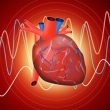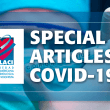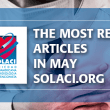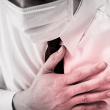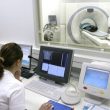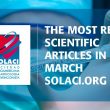We present the first clinical case in the section “The Fellow’s Corner”, aimed at fellows in Latin America who wish to learn and always be up to date in interventional cardiology. Leave your thoughts in the comment section of this article and join the conversation! Case Authors: Jair Suriano Martins (ARG), Leonardo Ripa (ARG). Moderator:<a href="https://solaci.org/en/2020/08/26/the-fellows-corner-1st-clinical-case-all-that-glitters-is-not-gold/" title="Read more" >...</a>
Randomized Evidence on the Helpfulness of Yoga for Cardiac Rehabilitation
This work brings us evidence that yoga-based cardiac rehabilitation improves how patients feel about their health and reduces the time it takes them to resume the activities they could perform before experiencing an infarction. That is important information with impeccable timing. The COVID-19 pandemic has interrupted most of the assistance we offer to cardiovascular patients,<a href="https://solaci.org/en/2020/07/24/randomized-evidence-on-the-helpfulness-of-yoga-for-cardiac-rehabilitation/" title="Read more" >...</a>
Effects of Health Promotion Since Childhood
All clinical practice guidelines indicate healthy lifestyle recommendations and, as cardiologists, we have slowly but surely implemented such practice. However, patients come to us once they have had health problems. What would happen if people had these recommendations at an earlier stage in their life? Would that prevent them from ever becoming patients? There was<a href="https://solaci.org/en/2020/07/01/effects-of-health-promotion-since-childhood/" title="Read more" >...</a>
Bleeding and Cardiogenic Shock: An “Unholy Alliance”?
Courtesy of Dr. Carlos Fava. Mortality in acute myocardial infarction (MI) with cardiogenic shock (CS) has been reduced over the past two decades. This has been possible thanks to early angioplasty, greater operator (and overall medical team) experience, new antiplatelet therapies, and ventricular assist devices, which have also been somewhat relevant in this setting. However, in<a href="https://solaci.org/en/2020/06/12/bleeding-and-cardiogenic-shock-an-unholy-alliance/" title="Read more" >...</a>
Special Articles on COVID-19
Myocardial Injury for COVID-19 Even in Young Patients with Mild Symptoms Most young COVID-19 patients not requiring hospitalization showed abnormal cardiac magnetic resonance imaging (CMR) beyond two months after diagnosis. Read more HERE Infarction, Stroke and Aortic Emergency Syndromes in the Shadow of the Pandemic The coronavirus pandemic has had a negative impact on the<a href="https://solaci.org/en/2020/06/08/special-articles-on-covid-19/" title="Read more" >...</a>
The Most Read Scientific Articles of May in Interventional Cardiology
01- Management of Infarction During the COVID-19 Pandemic Patients with cardiovascular disease infected with COVID-19 are at a particular risk for morbidity and mortality. In any case, it should be noted that most patients requiring cardiovascular care due to ischemic heart disease, peripheral vascular disease, or structural heart disease are not infected. Read more HERE<a href="https://solaci.org/en/2020/06/03/the-most-read-scientific-articles-of-may-in-interventional-cardiology/" title="Read more" >...</a>
Cardiovascular Sequelae Associated with COVID-19
Myocardial injury, as defined by an increased troponin level, can occur due to both ischemic and nonischemic processes. Myocarditis would be an example of a nonischemic event. A severe, acute respiratory infection causing hypoxia, especially due to COVID-19, can cause this myocardial injury. Elevated troponin levels have been described in patients infected with COVID-19, with<a href="https://solaci.org/en/2020/05/20/cardiovascular-sequelae-associated-with-covid-19/" title="Read more" >...</a>
How is the Pandemic Affecting MI? The Chinese Experience
ST elevation acute myocardial infarction has high mortality and morbidity rates. It is normally treated with primary PCI. The whole system has established very effective protocols to minimize ischemic time from symptom onset to definite treatment in the cath lab. This study reports the experience in Hong Kong since January 2020, when all emergency protocols<a href="https://solaci.org/en/2020/05/11/how-is-the-pandemic-affecting-mi-the-chinese-experience/" title="Read more" >...</a>
MR vs. FFR in Non-Culprit Lesions
Magnetic resonance (MR) and fractional flow reserve (FFR) correlate moderately as regards the assessment of non-culprit lesions in patients admitted with acute myocardial infarction who underwent primary angioplasty. For a similar degree of diagnostic accuracy, we would require a visual, semiquantitative, or fully quantitative comprehensive assessment of lesions. This work, soon to be published in<a href="https://solaci.org/en/2020/04/14/mr-vs-ffr-in-non-culprit-lesions/" title="Read more" >...</a>
The Most Read Scientific Articles of March
01- Coronavirus and the Heart: How Should Cardiologists Prepare? As the number of confirmed cases increases throughout the globe, a picture is emerging as to what the direct cardiovascular effects of this pandemic may be. Read more HERE 02- TAVR: Should Transradial Approach be the Second Access Site? Courtesy of Dr. Carlos Fava. One of<a href="https://solaci.org/en/2020/04/08/the-most-read-scientific-articles-of-march/" title="Read more" >...</a>



